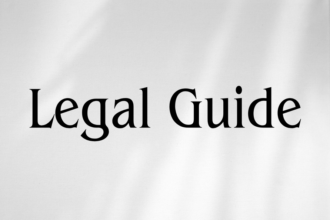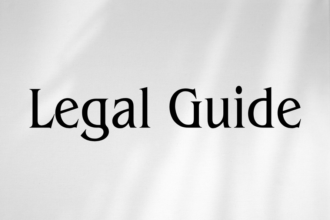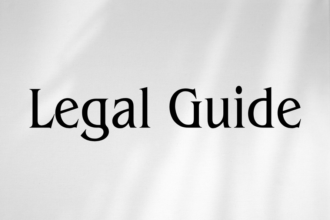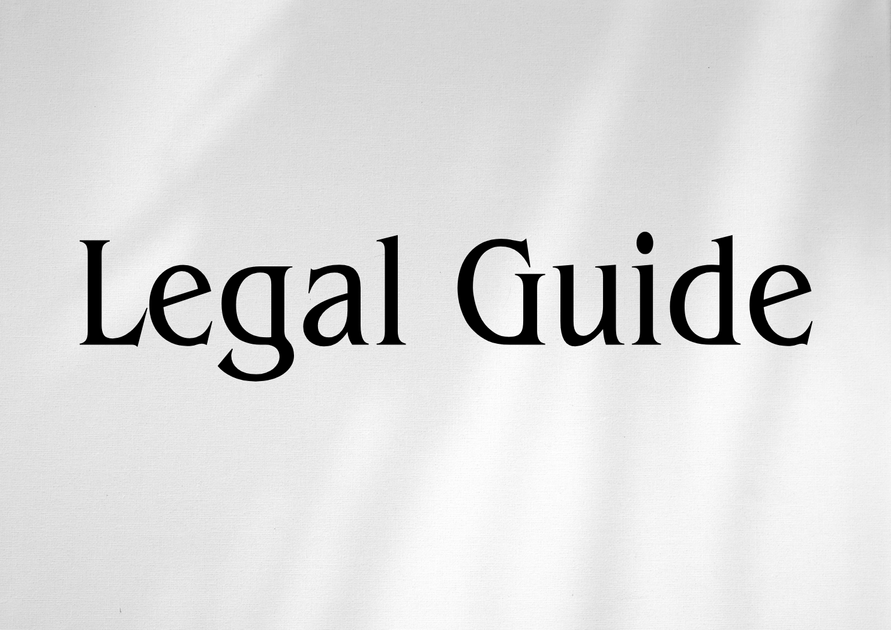Introduction: Navigating Ground Handling Licensing and Liability in Saudi Arabia
As the aviation sector accelerates its growth in the GCC, the Kingdom of Saudi Arabia (KSA) has emerged as a pivotal hub for air transportation. Ground handling services—comprising a spectrum of operational support including cargo management, passenger assistance, aircraft refueling, and ramp operations—are the lifeblood of efficient airport and airline functioning. With Saudi Arabia’s Vision 2030 intensifying aviation investments and inviting foreign direct participation, the regulatory landscape has undergone significant evolution. License regimes, liability allocations, risk management, and compliance obligations have all become central concerns for aviation stakeholders, especially those eyeing cross-border partnerships from the UAE and beyond.
Understanding the legal environment around ground handling in KSA is not only essential for service providers but also for airlines, airport operators, investors, and executive decision-makers in the UAE who navigate interconnected Middle Eastern aviation markets. Recent legal reforms in the GCC, coupled with operational scrutiny post-pandemic, have made regulatory compliance and liability management non-negotiable for competitive and risk-averse businesses. This article provides a consultancy-grade analysis of the current Saudi regulatory framework guiding ground handling services, explicitly examining licensing requirements, liability exposures, compliance strategies, and practical considerations for UAE business leaders. Comparative insights between Saudi and UAE approaches further equip stakeholders for regional best practices and proactive risk mitigation.
Table of Contents
- Regulatory Framework for Ground Handling in Saudi Arabia
- Licensing Procedures and Compliance Criteria
- Liability Regimes in Ground Handling: Statutory and Contractual
- Risk, Insurance and Indemnity: Structuring Your Approach
- Comparative Overview: Saudi and UAE Regulations
- Penalties, Enforcement, and Case Studies of Non-compliance
- Practical Advice: Navigating Licensing and Liability in Saudi Arabia
- Conclusion: Regulatory Trajectories and Best Practice Outlook
Regulatory Framework for Ground Handling in Saudi Arabia
Official Legal Sources and Their Scope
The regulation of ground handling services in Saudi Arabia falls primarily under the remit of the General Authority of Civil Aviation (GACA). Essential statutes include the Civil Aviation Law issued by Royal Decree No. M/44 of 2005 (as amended), GACA Regulations on Ground Handling Services 2020, and related guidance notes periodically released by GACA to clarify licensing and compliance protocols.
Key legal instruments:
- Royal Decree No. M/44 of 2005 (Civil Aviation Law) — Sets out the foundational legal structure for civil aviation in KSA, including ground services.
- GACA Ground Handling Services Regulation 2020 — Establishes eligibility, application requirements, operational obligations, and licensing tenure.
- Ministerial Instructions and GACA Circulars — Address technical standards, safety protocols, and periodic compliance procedures.
For UAE-based legal professionals and executives, understanding the interplay between GACA regulations and contractual obligations is crucial when dealing with cross-border aviation business, joint ventures, or procurement of ground handling services in KSA.
Relevance for UAE Stakeholders
Given the volume of flights and trade between the UAE and Saudi Arabia, many UAE-registered airlines, logistics firms, and service providers either operate directly in Saudi airports or contract with Saudi-based entities. Navigating the regulatory regime is thus essential not only for risk management but for maintaining operational continuity and competitive market presence.
Licensing Procedures and Compliance Criteria
Eligibility and Application Process
Under the GACA regulation, entities wishing to supply ground handling services must obtain a specific license. The key steps include:
- Pre-qualification: Demonstrating financial stability, technical expertise, and track record in ground operations. International applicants are often required to demonstrate a legitimate presence in Saudi Arabia, typically via a branch or subsidiary.
- Submission of Documents: Application forms, corporate documentation, proof of insurance, technical manuals, and compliance assessments must be submitted to GACA.
- Security Clearance: Background checks for both legal entities and their key personnel to ensure national security compliance.
- Operational Approval: Site inspections, validation of training records, and demonstration of compliance with GACA’s safety and environmental standards.
- Issuance of License: Licenses are typically valid for 3-5 years, subject to periodic audits and compliance renewal requirements.
Ongoing Compliance and Reporting
Holders of ground handling licenses are subject to ongoing duties, including:
- Annual submission of operational and financial reports to GACA
- Periodic safety audits and participation in industry training
- Immediate reporting of major incidents or regulatory breaches
- Timely renewal of insurance coverage and license documentation
- Participation in GACA-mandated risk assessment exercises
Non-compliance triggers a graduated response: from financial penalties, mandatory remediation, license suspension, up to revocation in cases of persistent or egregious violations.
Documentation Checklist (Suggested Table Visual)
| Document Required | Purpose | Update Frequency |
|---|---|---|
| Business Registration & Licenses | Corporate legitimacy and eligibility | Upon expiry/renewal |
| Insurance Certificates | Proof of third-party and operational coverage | Annually |
| Technical and Safety Manuals | Operational compliance | Quarterly or as updated |
| Employee Security Clearances | Background vetting for safety | As required |
| Incident Reports | Transparency on operational incidents | Upon occurrence |
| Training Records | Staff competence | Annually or after training |
Liability Regimes in Ground Handling: Statutory and Contractual
Legal Basis for Liability
The Saudi Civil Aviation Law (Royal Decree No. M/44) and GACA Regulations prescribe the basis of liability for ground handling providers. Liability may arise from breach of statutory duties, negligence, or breach of contract (often as stipulated in Standard Ground Handling Agreements that align with IATA SGHA templates).
- Strict Liability: In areas such as safety violations causing damage to aircraft or property.
- Negligence-Based Liability: Failure to follow protocols resulting in injury or loss.
- Contractual Liability: Based on negotiated terms, often limited or capped subject to insurance coverage and liability waivers.
Liability Allocation in Practice
While the law sets out overarching obligations, parties may negotiate contractual risk allocations, but cannot derogate from statutory safety provisions. Standard contracts typically outline:
- Scope of services
- Liability limits per incident (aligned with insurance limits)
- Force majeure carve-outs
- Mutual indemnities
Hypothetical Case Study
Scenario: A ground handling company performing baggage operations at Riyadh’s King Khalid International Airport negligently mishandles several pieces of expensive musical equipment belonging to a UAE-based band, causing significant damage.
- Legal Consequences: The provider is subject to liability for direct damages under GACA regulations, and may further be contractually obliged to compensate for consequential losses if the agreement so specifies. Insurance provisions may cover only up to specified limits.
- Operational Impact: The incident, if reported late or inadequately, could trigger both compensation claims and regulatory sanctions, including license review.
Risk, Insurance and Indemnity: Structuring Your Approach
Insurance Mandates under Saudi Law
GACA regulations stipulate compulsory insurance for licensed ground handling service providers. Minimum thresholds are dictated by the scope of activities, aircraft tonnage, and passenger throughput. Required coverage typically encompasses:
- Third-party liability (bodily injury and property damage)
- Aviation-specific operational risks (airside incidents, cargo loss)
- Professional indemnity (errors and omissions damage)
Indemnity Clauses and Their Role
Negotiating comprehensive indemnity provisions is vital for both local and international parties. Common approaches include:
- Bilateral Indemnity: Both parties agree to defend and indemnify each other from third-party claims arising from their respective negligence or willful misconduct.
- Sub-limits on Liability: Caps negotiated on a per-occurrence and aggregate annual basis, ideally harmonized with insurance policies.
- Exclusions: Language clarifying what types of damages (e.g., punitive, indirect) are excluded from indemnity.
Practical Compliance Strategies
For UAE-based operators expanding into Saudi airports or contracting KSA-based ground handling companies, multi-jurisdictional insurance coordination is highly recommended. Legal due diligence must include a review of certificates of insurance, analysis of exclusions, and assessment of whether the Saudi regime recognizes or permits cross-border insurance solutions.
Comparative Overview: Saudi and UAE Regulations
Legal Evolution and Regulatory Milestones
| Aspect | Saudi Arabia: GACA Rules | UAE: General Civil Aviation Authority |
|---|---|---|
| Primary Law | Civil Aviation Law (Royal Decree No. M/44), GACA Regulations | Federal Law No. (20) of 1991 (as amended), GCAA Rules |
| Licensing Term | 3-5 years, renewable | Typically 2-5 years, depending on service type |
| Insurance Mandates | Compulsory; based on tonnage/services | Compulsory; minimum standards set by GCAA |
| Liability Caps | Subject to regulatory guidance and contract | Often mimics IATA SGHA framework but can differ in local contracts |
| Enforcement | Admin fines, license revocation, criminal referrals for fraud/negligence | Civil and criminal, with more integrated dispute resolution channels |
Recent Legal Updates (2025 Outlook)
The UAE’s Federal Law No. (20) of 1991 on Civil Aviation has seen progressive amendments in 2025, tightening insurance mandates and clarifying the role of AI and digital safety protocols—a trend soon likely to influence GACA updates. Stakeholders should anticipate convergence on digital compliance, environmental standards, and enhanced whistleblower protections within this decade.
Penalties, Enforcement, and Case Studies of Non-compliance
Enforcement Mechanisms
GACA wields broad authority to enforce compliance:
- Financial Penalties: Proportional to severity and frequency of violation.
- Mandatory Corrective Actions: Including retraining, process overhauls, enhanced reporting.
- License Suspension or Revocation: For repeat or egregious non-compliance.
- Criminal Matters: Particularly for falsification, fraud, or gross negligence causing public harm.
Penalty Comparison Chart (Suggested Table Visual)
| Offence | Saudi Arabia Penalties | UAE Penalties |
|---|---|---|
| Operating Without License | SAR 100,000 fine + suspension | AED 150,000 fine + potential criminal referral |
| Serious Safety Breach | SAR 500,000, possible criminal prosecution | AED 300,000–500,000, possible imprisonment |
| Insurance Lapse | Immediate suspension, SAR 50,000 | License suspension until reinstated |
| Failure to Report Incident | SAR 20,000–100,000 | AED 25,000–75,000 |
Case Example: Regulatory Action
Background: In 2023, a licensed ground handler at Jeddah’s King Abdulaziz International Airport was issued a temporary suspension for failing mandatory training compliance. Comprehensive audits exposed systemic training gaps, prompting GACA to require extensive staff retraining, revised documentation, and independent third-party audits as conditions for reinstatement.
Takeaway: Saudi enforcement aims for regulatory improvement rather than punitive measures alone. However, persistent or willful breaches prompt license revocation and, less commonly, prosecution.
Practical Advice: Navigating Licensing and Liability in Saudi Arabia
Consultancy Insights for UAE-based Operators
- Early Legal Diligence: Initiate compliance review at the outset, including GACA license validity, staff clearances, and insurance footprint.
- Contract Negotiation: Insist on clear service definitions, mutual indemnities, and liability caps harmonized with regulatory obligations.
- Integrated Risk Management: Align your Saudi operations’ insurance, training, and reporting protocols with UAE benchmarks where possible for smoother cross-jurisdictional oversight.
- Stakeholder Engagement: Foster open channels with GACA inspectors and legal advisors. Proactive communication signals a compliance-first approach.
- Continuous Training: Keep staff updated on regulatory changes, especially in safety, environmental, and digital reporting mandates.
Suggested Visual: Compliance Process Flow Diagram
(Place a diagram showing stages from Application & Pre-qualification, Document Submission, Security Clearance, Operational Approval, Audits, to Renewal. Each stage can highlight key compliance checks.)
Conclusion: Regulatory Trajectories and Best Practice Outlook
The Saudi legal environment for ground handling services is rapidly professionalizing, driven by sector growth, internationalization, and a sharpened focus on risk management. For UAE-based companies and professionals, mastery of licensing and liability provisions is a clear business advantage, enabling both compliance and competitive agility. Forward-looking organizations will invest in legal due diligence, regional harmonization of protocols, dynamic training, and robust stakeholder partnerships.
With anticipated convergence in GCC aviation regulations, especially as digitalization and sustainability reshape the sector, businesses must adopt a posture of anticipatory compliance. Staying abreast of updates from the GACA, UAE General Civil Aviation Authority, and official government sources remains critical. Above all, embedding strong operational, legal, and ethical standards in ground handling operations is not merely a regulatory obligation—it is a precondition to securing trust, continuity, and success in the intensely competitive Gulf aviation ecosystem.




